Resources
AVAC’s Resource Database contains educational and advocacy materials covering a wide range of issues on biomedical prevention of HIV, STIs, COVID-19 and emerging health threats—from research to rollout.
To search for clinical trials and detailed information on products in development, visit our Prevention Research & Development Database

Results
showing 1-10 of 978
PrEP Price Comparison
Comparing the annual price of oral TDF/FTC vs. the dapivirine vaginal ring and injectable cabotegravir.
Prevention Option:
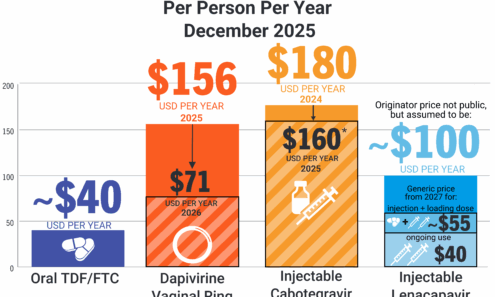
ARV-Based and Multipurpose Prevention Technology R&D Pipeline
The pipeline of non-vaccine HIV prevention products includes oral pills, vaginal rings, vaginal and rectal gels, vaginal films, long-acting injectable antiretrovirals and more. Also pictured are the range of MPTs in development that aim to reduce the risk of HIV and STIs and/or provide effective contraception for women.
Prevention Option:
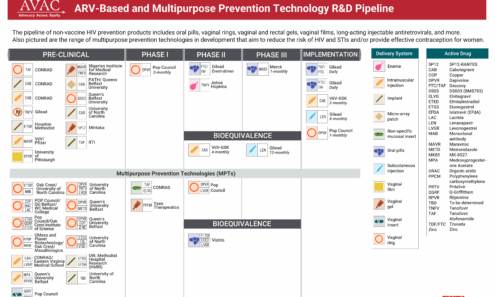
Years Ahead in HIV Prevention Research: Time to Market
This timeline shows the potential time points when the next-generation of HIV prevention options might find their way into new programs.
Prevention Option:
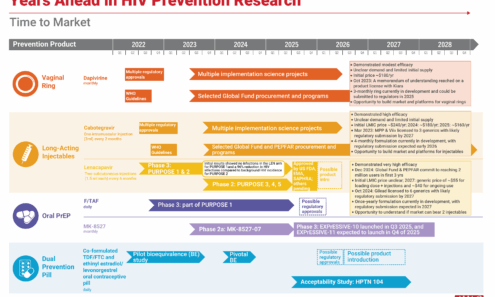
Broadly Neutralizing Antibody Combinations
Overview of the combinations of broadly neutralizing antibodies (bNAbs) under investigation in early clinical studies for HIV prevention.
Prevention Option:
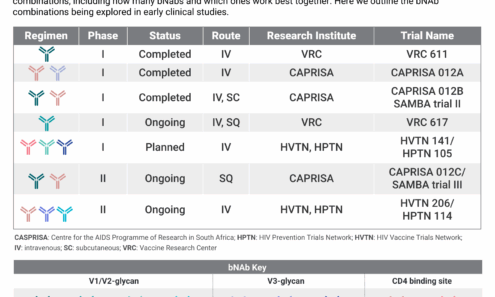
HIV-Specific Neutralizing Antibodies by Target
A number of broadly neutralizing antibodies that target various regions of HIV’s Env protein are being developed for HIV prevention.
Prevention Option:
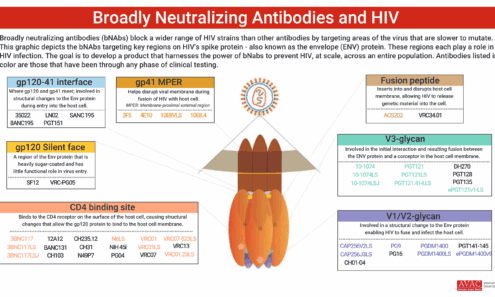
An “Innovation Pile-Up” in Next-Generation LA-PrEP is Possible
The HIV prevention market is headed toward a period of significant opportunity—and possible congestion—as a slate of new products are on track for continued development and potential introduction to the market in 2027 and 2028. Markets and policies must be built to support the products in the market already, so that new options can be rapidly deployed and deliver impact. Otherwise, the field will squander time and money, with epidemic control slipping further out of reach.
Prevention Option:
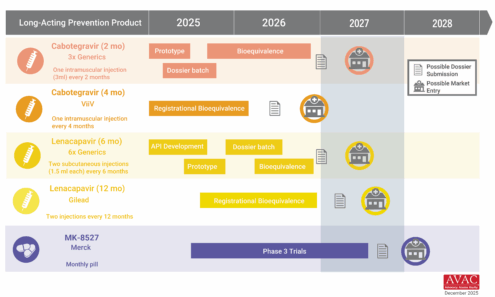
Lenacapavir Regulatory Approval
Regulatory approvals, pending decisions, and appeals as of December 2025.
Prevention Option:
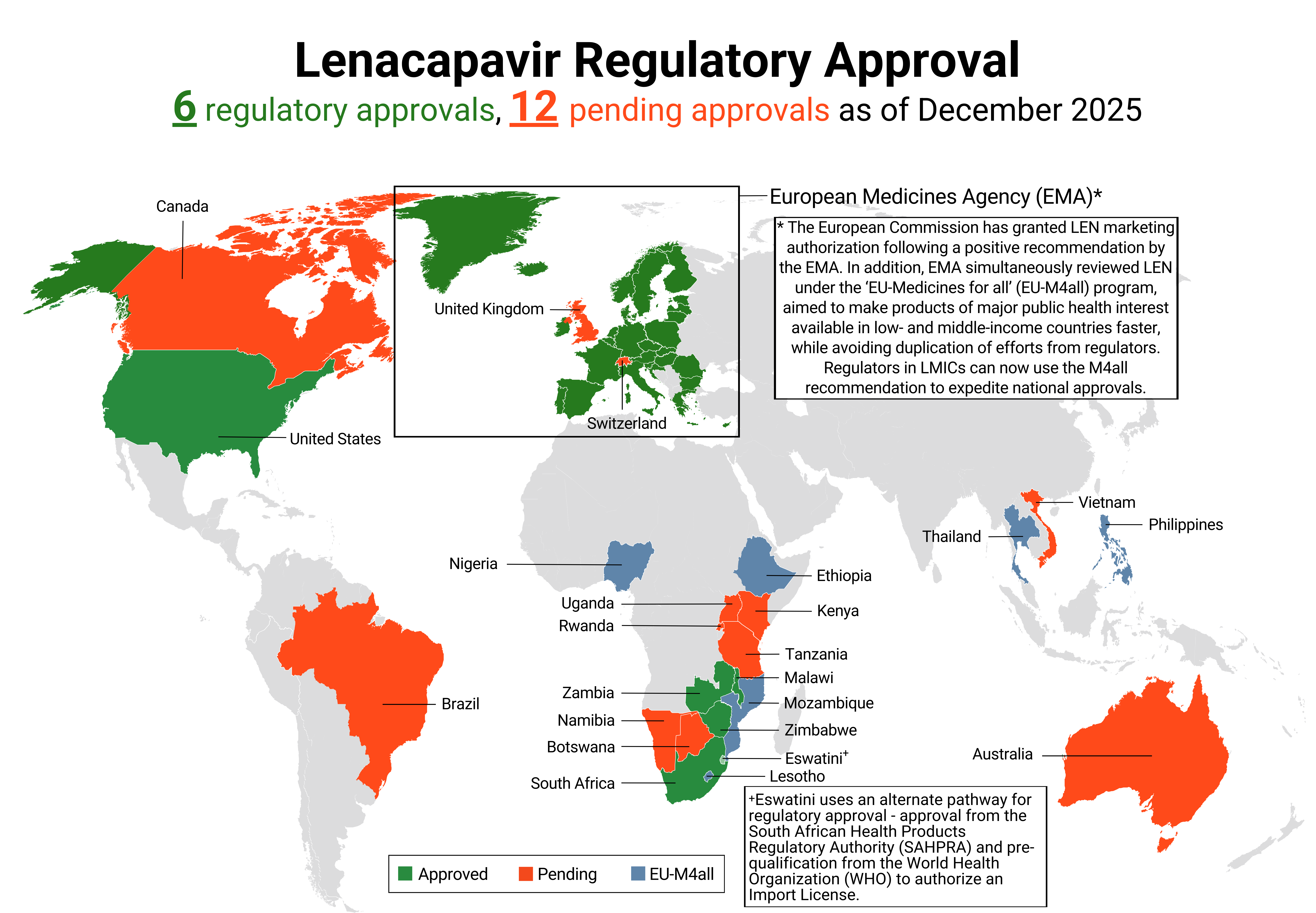
Source of Lenacapavir for PrEP Supply to Early Adopter Countries
The Global Fund, with support from CIFF, and PEPFAR have jointly committed to reaching up to two million people with LEN for PrEP over three years. Supply of LEN is due to begin arriving in countries in late 2025 with service delivery planned to start in early 2026.
Prevention Option:
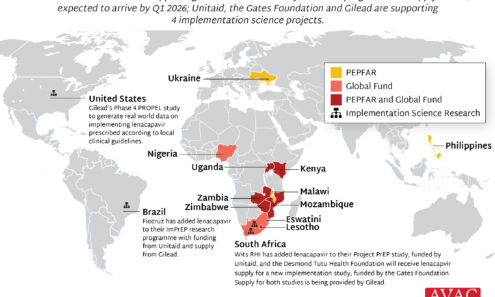
Moving a Product to the Real World
To reach the UNAIDS target of 10 million PrEP users by 2025, initiations of oral PrEP alone will not be enough—and this graphic shows that the field is beginning to apply past lessons to accelerate introduction of injectable cabotegravir.
Prevention Option:
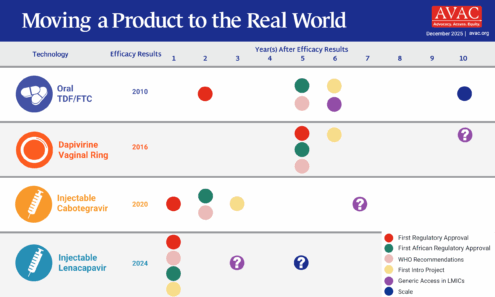
Where We Are Now with LEN for PrEP
The chaos in foreign assistance programs (including discontinuation of major PrEP programs), cuts in staffing and new demands on donor commitments will make decisions on the procurement of LEN for PrEP more complex and uncertain.
Prevention Option:
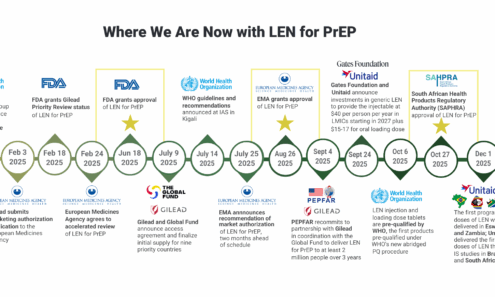
showing 1-10 of 978